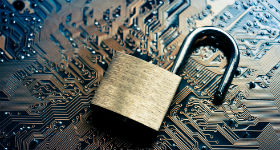The Data Center's Rise Means Clear Hazards Ahead
Just two weeks ago, we found out from Synergy Research Group that two major players – the U.S and China –account for more than half of all data centers on the face of the Earth. Seagate then came out with some research of its own that highlights issues of data center management in the United States and China. What Seagate found should make everyone pay attention.
Seagate revealed a major good news/bad news situation: budgets are expected to rise, but won’t be enough to meet capacity demand. It was also found that security is a major concern for both countries' data center operations; the most frequently-used strategy for meeting data needs is buying and replacing drives, and the biggest trouble that data centers have is related to the time and expense needed to conduct drive management operations.
Interestingly, the reports suggest that there won't be a lot of new staffing to help deal with issues of storage in the data center, as only 28 percent of U.S operations and 33 percent of Chinese intend to do so. That suggests a clear focus on software and hardware options to try and do more with what's on hand. Drive purchasing is, as mentioned, a big part of the operation, but so too are measures like investment in data archiving, automatic storage tiering, and even the reorganization of assets currently on hand.
Security is also a big field for the data centers, and one thing that's clear is that many firms are planning multiple approaches to providing that security. Security intelligence is a big point for 85 percent of firms, but at the lowest end of the spectrum, endpoint security management, even 69 percent of respondents are planning to get in there. With so many possible security measures polling in the 70-plus percent range—all of the remaining choices come in between 70 and 77 percent total—it's clear that multiple approaches are planned.

One great point is that encryption for data at rest is a planned feature for 77 percent of data centers. Seagate is actually set to help out on this front, offering a line of self-encrypting drives (SEDs) that provide protection against stolen data by rendering that data unreadable to those who don't have the appropriate encryption keys. That's a great step toward solving one of the biggest problems, but it's far from the only problem. Keeping the data center running helps ensure that all our various cloud-based products—from hosted call centers to voice services and beyond—run as well. Those firms that can provide the best in data center access, meanwhile, are those most likely returned to when it comes time to consider new products in the market. Those who can't keep the data center running are more likely to be thrown over for better-quality competitors.
While keeping the data center running is no small task by any stretch, there are some key points to consider, as data centers in China and the United States are finding out. Keeping track of those points will go a long way toward ensuring the best in data center services.
Edited by Kyle Piscioniere

